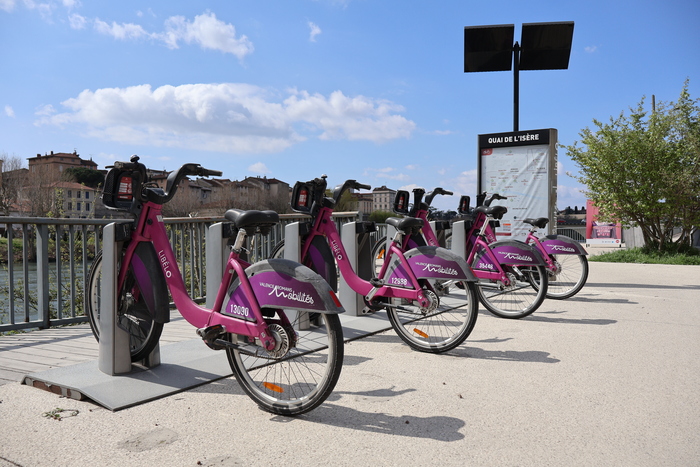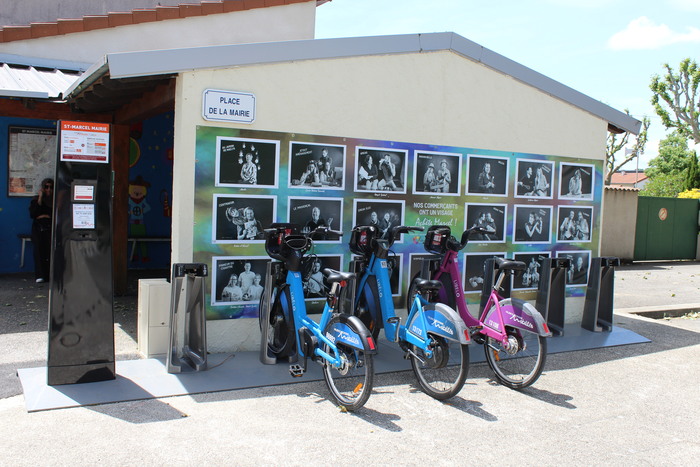



Since 2018, Libélo, the bike-sharing service of Valence Romans Mobilités, has undergone multiple transformations. Managed by Citéa, the local mobility operator operated by Transdev Valence Mobilité, the service has become a key feature of the urban landscape.
Nicolas Morel, Head of the Cycling Division at Citéa, reflects on Libélo’s evolution, its partnership with Connected Cycle, and its ambition to provide an ever more reliable, secure, and efficient service.
Before 2018, the bike-sharing service was still in its infancy. “We had a bike-share system that was barely alive,” says Nicolas Morel. But in October 2018, everything changed: a new version of the service was launched with a denser network, a larger bike fleet, electric-assist bikes, and the introduction of Canadian provider PBSC for bikes and stations.
That’s also when the partnership with Connected Cycle began. “From 2018 onward, we started installing the first trackers on our bikes.” The geolocation solution was deployed on the e-bikes, instantly adding value in fleet management and equipment security.
Libélo’s service area spans much of the agglomeration, with two main hubs: Valence and Romans-sur-Isère. The station network extends into neighboring municipalities, reaching even the high-speed train (TGV) station halfway between the two cities. “We have 13 stations in Romans-sur-Isère, two at the TGV station, and the rest in Valence,” explains Morel.
With a population of 260,000 in the area — 120,000 around Valence — the demand is real. In 2024, Libélo exceeded 200,000 annual rentals, with average ride times of 10–12 minutes on mechanical bikes and 16–17 minutes on electric ones.

Libélo chose to equip only its electric bikes with Connected Cycle trackers, and for good reason. These bikes represent a higher investment and require close monitoring to ensure fleet availability and protect public assets.
“The primary need, which still holds true, is to locate stolen or lost bikes,” says Morel. “And it works extremely well. We’ve had very few bikes truly stolen or lost since 2018 — you could count them on your fingers.”
Each week, several bikes need to be located — whether due to not being returned to a station or because a technical issue prevents their detection by the central system. Thanks to Connected Cycle’s fleet management platform, technicians can find them in just a few clicks.
“When the bike is shown in a location, it’s really there. There’s no need to search for hours.”
This precision saves time, improves maintenance operations, and enhances service security. It also acts as a deterrent: “Users know the bikes are tracked, so they’re more careful.”
The platform also allows route verification, which is helpful in case of user complaints. “When a customer says they had a problem with a station or couldn’t dock the bike, we can check exactly what they did via the Connected Cycle interface.” This enables fair and objective resolution of disputes.
Citéa’s bike team is versatile: four technicians and a coordinator manage bike lockers, long-term rentals, and the shared bike service. For the latter, geolocation is a constant support.
“They handle everything: rebalancing, maintenance, and retrieving bikes left outside stations.” Connected Cycle’s solution has become a daily working tool, giving the team autonomy and responsiveness.
In 2025, Libélo took a major step forward by expanding significantly. “We added 75 bikes, including 50 electric ones equipped with Connected Cycle’s new cc521 GPS trackers with 4G chips,” says Morel. The old 2G units from 2018 are gradually being replaced.
This development follows the renewal of the operating contract signed in summer 2024 between Transdev and Valence Romans Mobilités, which runs until 2030. The new agreement includes further station deployment. “The goal is to make the service more attractive to users and reach more people — especially in underserved areas.”
The growing share of e-bikes reflects user expectations. “E-bikes allow longer distances, faster travel, and attract users who hesitate to ride traditional bikes — especially in a city with hills.”
Usage follows a clear seasonal pattern. “Peak usage is from April to late June, and then from September to late October. In summer, Valence empties, so commuting decreases.”
Multimodal use is also increasing: many users combine cycling with train or bus rides. The TGV station hubs respond directly to these new needs.
Libélo perfectly illustrates the evolution of micromobility in medium-sized French cities. With high-performance tools like Connected Cycle’s geolocation platform, the service now offers a quality level comparable to that of major cities.
“It’s truly a valuable tool for us,” concludes Morel. As cities look to implement sustainable, flexible, and connected transport solutions, Libélo shows how well-designed services can reshape mobility across entire territories.